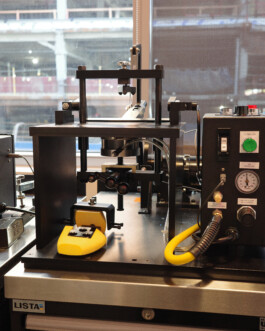


This is a classic: If you've watched the socials of Runners Highest recently, you might have recognized I’ve been to New York to run the marathon (that's the very short version) and then went off to Boston to visit not only New Balance’ Lawrence factory, where the iconic 990 is produced, but also to Boston’s New Balance Headquarters, *the Track* and the Sports Research Lab where they invent, test and research everything innovation-wise. We'll come back to the factory in a couple of days, so stay tuned!
We started with "The Track", New Balance' massive indoor track facility. Well, that's not doing justice to the complex as there's space for more than 2200 spectators, several basketball courts, warm-up tracks, throwing facilities and pretty much room for dozens of other sports. Also: it's built on the third floor with a concert venue for almost 4000 spectators below. And, going up to 4 and 5, you're entering (well, not allowed usually) in the New Balance Sport Research lab, where much of the running magic is happening. Prototypes get developed, innovation researched, data fetched and product tested by athletes from start to finish. It's heaven for shoe and product nerds, that's for sure.
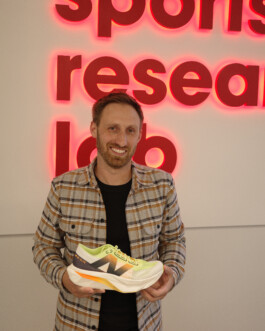
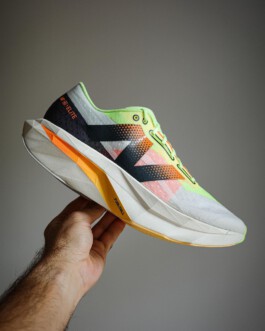
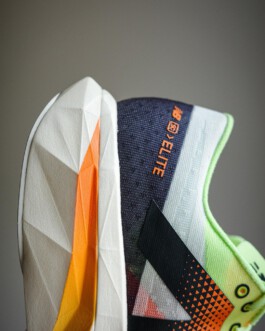
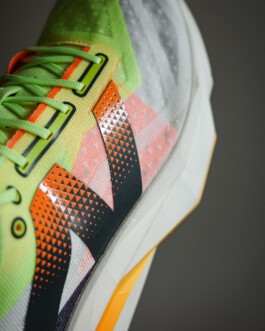
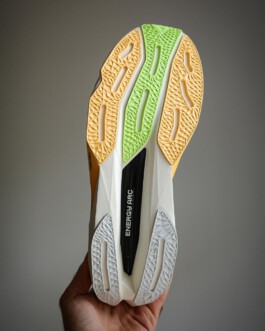
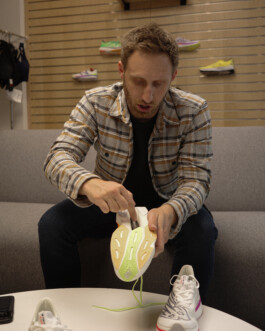
We had the chance to visit the facility and then sit down to have a talk with Chris Morfesi from New Balance - he's senior global product manager of performance running and works in the developement of new running product of NB. On the occasion of the upcoming release of the v4 of the SC Elite, we especially had to ask some questions about the racing supershoe. Here we go:
On the Elite series, Morfesi says that ‘This shoe is our race car – it’s the most important shoe that we build in the [NB] line next to the 1080, and we’re really excited to get this one [the v4] out to the masses.'
Talking about the development of the Elite, he starts with the V1 in 2020: 'There were some things there that were like, okay, a good first step. But we still had more to do. Then came the v2, the v3 and now the v4. So we're constantly learning and evolving'. After the V1 was a shoe that (we all agreed on that) needed some improvement, the v2 was way different and more appreciated throughout the running scene.
‘The v2 was one of the most popular shoes that New Balance built,’ says Morfesi. But for the wrong reason? Morfisi goes on ‘When we briefed in the v3, we had just won an award for the most accommodating super shoe [for the V2] – so the most all-encompassing super shoe. And I remember saying to the team, “that is not an award I want to win”. I don’t want [the Elite] to be the most accommodating super shoe, I want [it] to be the fastest super shoe. I want to be setting records.’
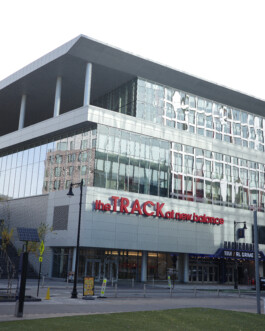
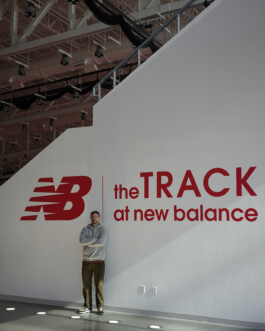

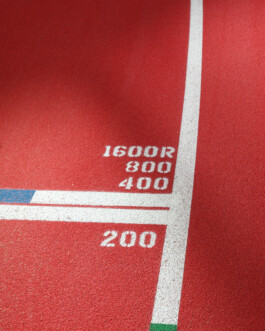
What I always find extremely amazing is performance brands releasing their newest innovation at one point but at the same time, they’re already on to the next idea and the one after that and so on. We asked about the production cycle – in Lawrence factory we were told that usually that’s starting at 18 months from the first idea to the final product on sale, but with the Elite and other high level products, that's an even longer span:
About three quarters of the way through [the v3] we felt like we needed to get a jump start on the v4 to take all the learnings that couldn't be captured into this shoe and make sure they get into the v4, so the v4 is definitely a labour of love for me.’ You could tell that Morfisi is definitely dedicated to the Elite silhouette!
‘Once the [v3] hit commercialisation, the upper wasn't everything we wanted it to be,’ […] ‘So, the upper was overhauled and I asked the team to bring back a technology we used to have a long time ago called FantomFit. It's essentially this heat bonded film, so we were able to get a much thinner mesh package and not overbuild the shoe.’
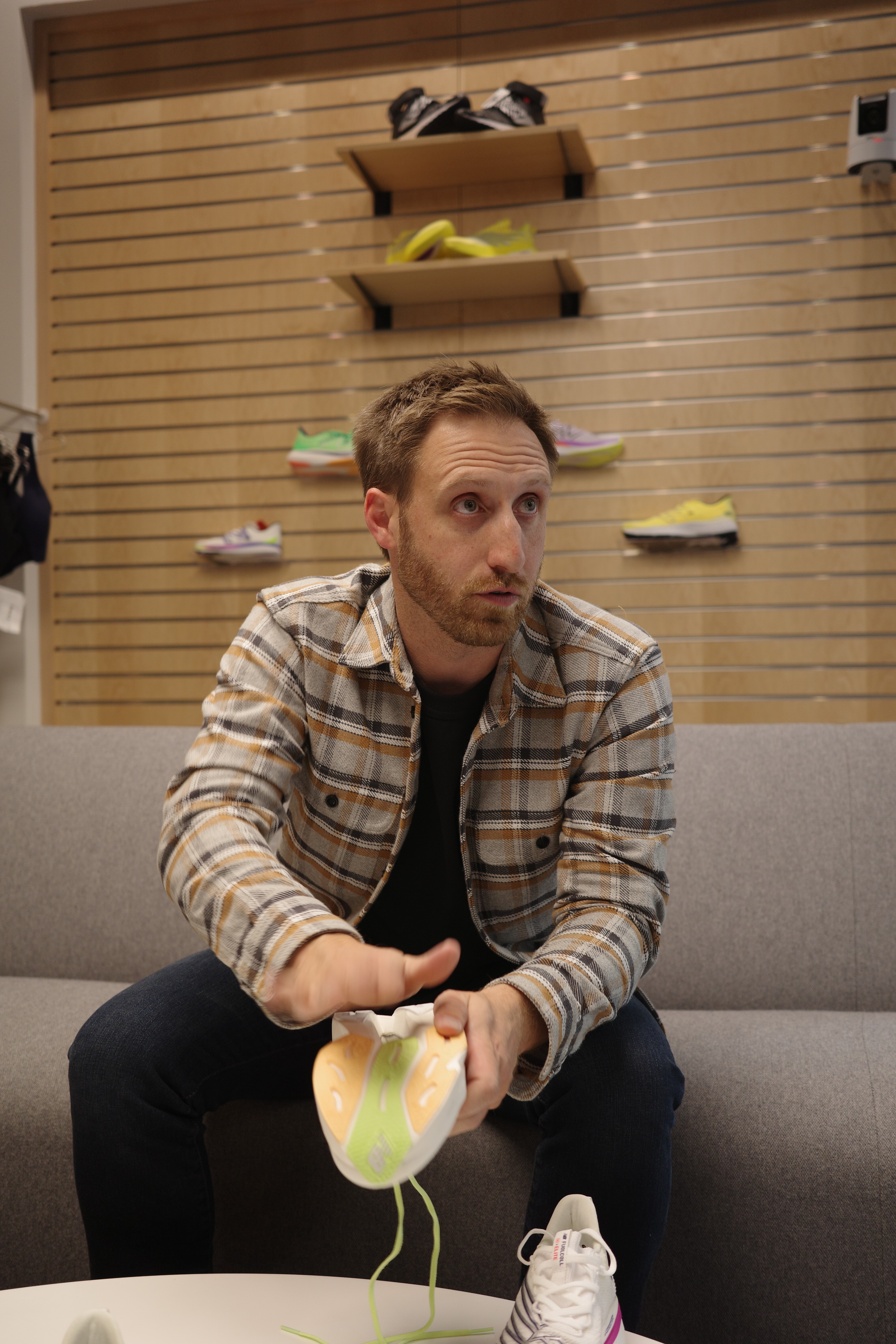
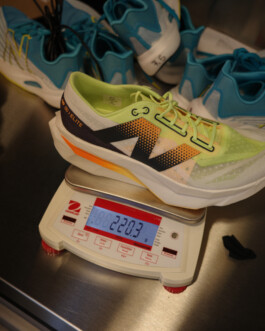
‘I think for some of our development team that was almost tough to understand. They would be like, “we need to make sure this thing is super comfortable”. It's like, no, it needs to be comfortable, don't get me wrong, but it can be thin and bare bones.’ You’ll realize, when you’ve got the shoes in hand, that indeed it lost much of the mesh upper, doesn’t have a sock-like fit anymore and in general seems to be reduced to the bare minimum materials to make the shoes even lighter (220gr for the US 9.5 we had in hands in the lab). Nothing that’s not necessarily needed was built in.
Now I’ll have to do a little explanation for all of you that might not be too familiar with the term PEBA: PEBA is a high performance thermoplastic elastomer that nowadays is often used in sports equipment, such as skiing boots, golf balls and, you guessed it, running shoes.
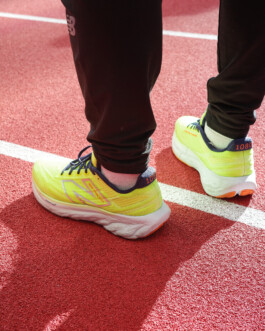
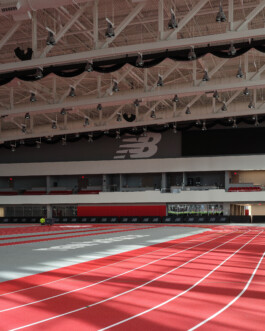
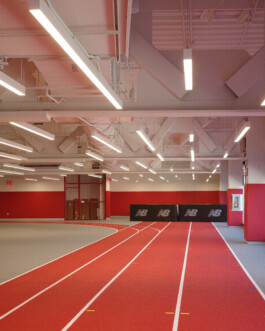
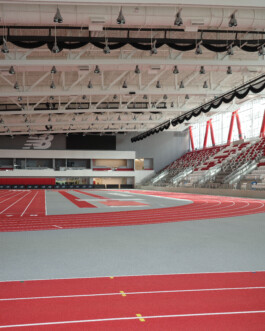
Peba in running shoes:
Peba(x) is a lightweight plastic polymer that is the same material used in the PEBA foams found in most race day super shoes. This foam can be compressed to create a stiffer plate-like structure. The foam is squished and hardened to form a plate, resulting in a lightweight yet supportive platform. (via Palmetto)
As the v4 uses a new composition of PEBA, we asked to learn more about it: ‘There are so many different types of PEBA and different companies are using different materials,’ Morfesi explains. ‘We wanted to make sure we had a top tier PEBA foam in our shoe that worked with our footwear last, that worked with our carbon fibre plate and that our athletes preferred.’ The New Balance SC Elite v4 uses 100% PEBA in the midsole and according to data from their Sport Research Lab, the new foam delivers 87% energy return compared to 83% from the v3.
In terms of the shoe’s durability, Morfesi believes the v4 is ‘in line with your other super shoe life span of 300 to 500 miles’ depending on things like your form, weight and scuffing – a refreshing take considering some of this years’ newest carbon racers have promised to last significantly less than that.
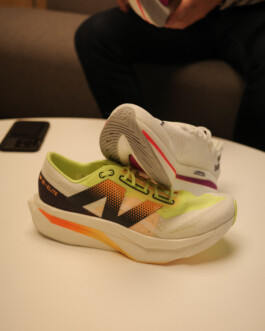
What I found very note-worthy is the following quote on the durability of the midsole. Morfesi says that the brand's data shows the shoe's upper would fall apart 'before the midsole really lost its energy return properties'. Coming from the world of sneakers, I kinda learned the opposite (even the hard way). You buy vintage sneakers and the upper will just be completely new and fine while the midsole is falling apart, the glue is dry, the shoe is not wearable anymore.
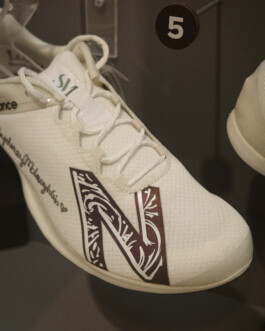

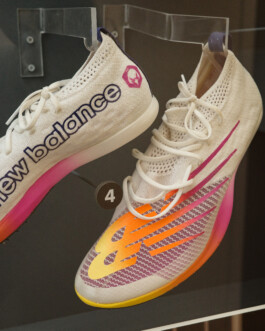

Let’s end with some facts – the New Balance SC Elite v4 will probably be released on February 1st, 2024. Estimated retail price will be (that’s a guess) somewhere around 250€ as the v3 was 230€. What I’m sure about: I’ll very soon have some fun fast runs in the V4 and will be back with a personal review and some facts about how they run.
If you have any questions, hit me up via email or (even easier) Instagram! Also check out the feature I did about my factory visit in New Balance’ Lawrence facility. It’s about heritage, craftmanship and quality!
Also: thank you New Balance for giving me the opportunity to visit Boston and have all those insights. Much appreciated. Also: i'm done with street racing for this year, so back to city to summit finally!
Editor: Peter Weigand
